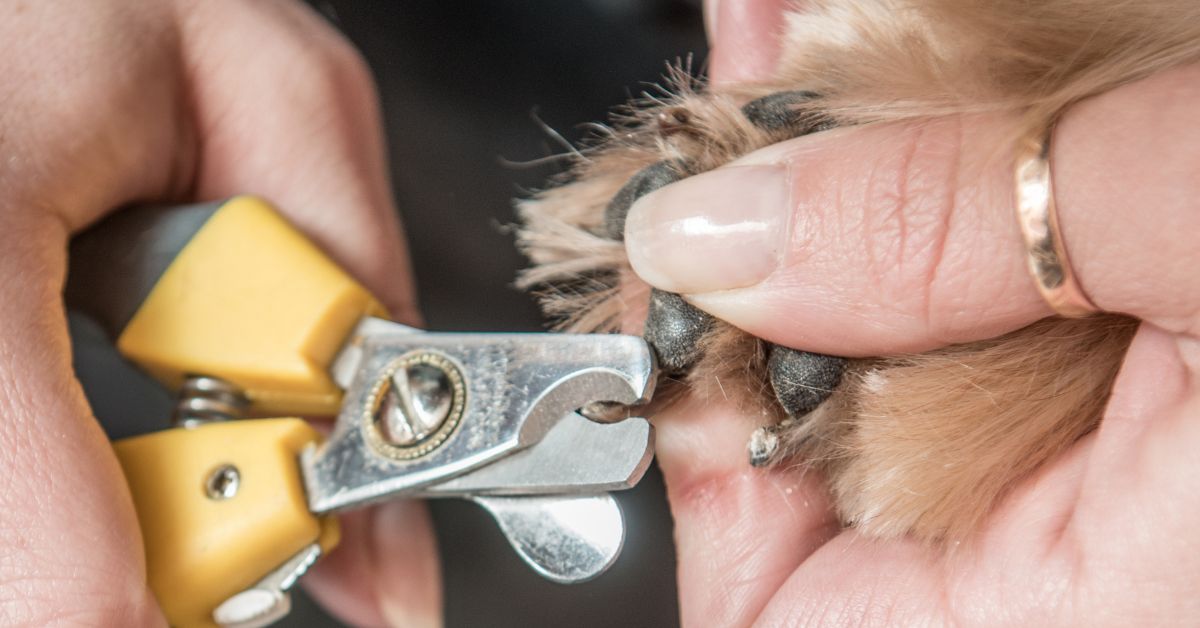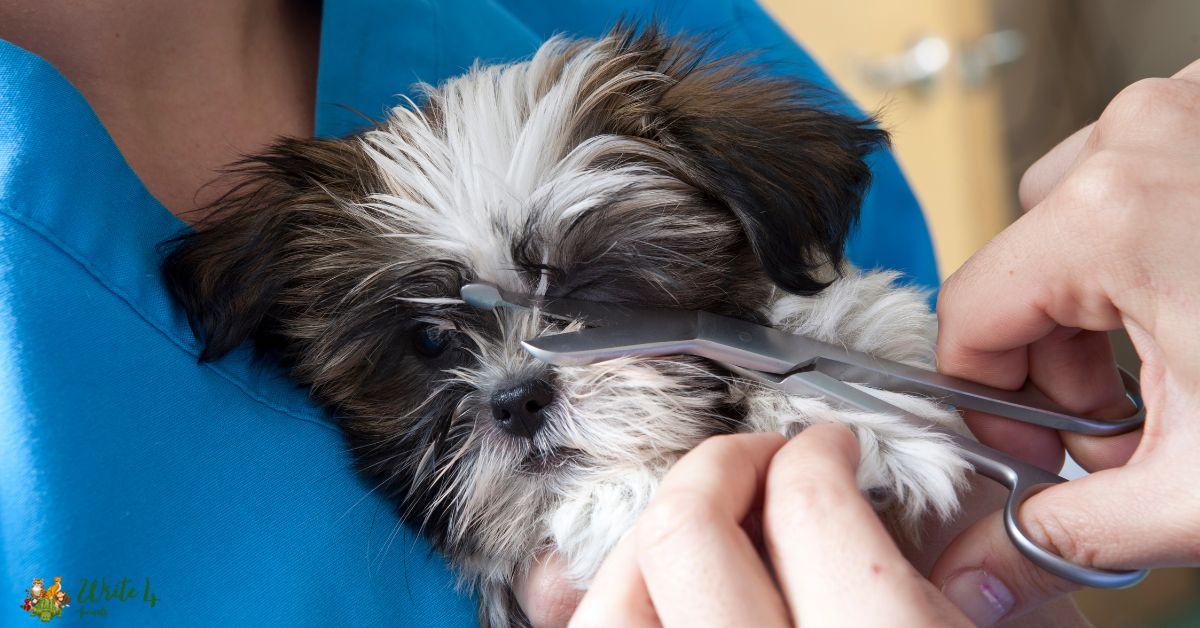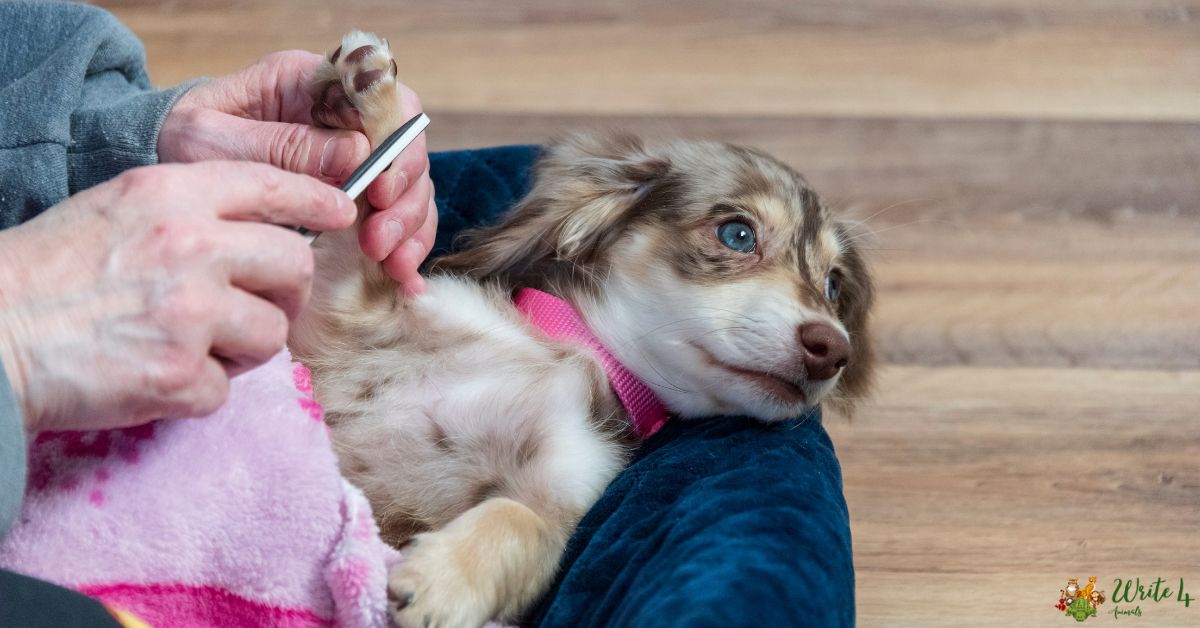Welcoming a litter of adorable puppies into the world is a joyous occasion, filled with cuddles, love, and a flurry of questions about their care. One common concern that arises is whether Can You Cut a 3 Week Old Puppies Nails?. As responsible pet owners, it’s natural to want to ensure the well-being of these little ones, but what’s the right approach when it comes to their delicate nails? In this blog post, we’ll delve into the topic of nail care for young puppies, exploring the dos and don’ts to help you navigate this important aspect of their early development.
The Importance of Puppy Nail Care
Puppies are bundles of joy that bring happiness and excitement to our lives. As new puppy owners, there are numerous responsibilities that come with caring for these little furry friends. One often overlooked aspect of puppy care is nail maintenance. While it might not be as glamorous as choosing the perfect collar or teaching them tricks, proper nail care is essential for a puppy’s overall well-being.
1. Preventing Health Issues
Regular nail care is not just about aesthetics; it’s about preventing potential health problems. Overgrown nails can lead to discomfort, pain, and even long-term joint and posture issues. Puppies are active and playful, and their nails naturally get worn down when they run and play on different surfaces. However, if left unchecked, these nails can become ingrown, causing pain and inflammation.
2. Avoiding Pain and Discomfort
Imagine walking around with your toenails constantly pressing against your shoes. That’s the reality for dogs with overgrown nails. It can lead to changes in gait, putting undue stress on their joints and paws. This can result in discomfort, pain, and even difficulty in walking. Puppies are especially vulnerable to these issues, as their bodies are still developing.
3. Maintaining Healthy Posture
Proper posture is crucial for dogs’ physical health. Overgrown nails can affect their ability to stand and walk correctly. In severe cases, it can even lead to malformation of the bones and joints. By keeping their nails at the right length, you contribute to maintaining their posture and overall skeletal health.
Understanding Puppy Nail Growth
Understanding the growth of a puppy’s nails is the first step in effective nail care. Puppy nail growth is influenced by various factors, including genetics, breed, diet, and activity levels. Here’s what you need to know:

1. Natural Wear and Tear
Puppies’ nails naturally wear down through their daily activities. Running, playing, and walking on different surfaces like concrete, asphalt, and grass help naturally file down their nails. However, for puppies that spend more time indoors or on softer surfaces, nail growth might be faster.
2. Growth Rate
Puppy nail growth varies from breed to breed and can even differ within the same litter. Generally, smaller breeds tend to have faster nail growth compared to larger breeds. On average, puppies might need their nails trimmed every 2-4 weeks, depending on individual factors.
3. The Quick
Understanding the anatomy of a puppy’s nail is crucial. The “quick” is the blood vessel and nerve inside the nail. Cutting into the quick can cause bleeding, pain, and aversion to nail trimming in the future. Puppies’ nails are softer and their quicks shorter, making them more susceptible to accidental injury.
When Should You Start Trimming Puppy Nails?
The timing of when to start trimming your puppy’s nails is a crucial consideration for their overall comfort and well-being. Starting early sets the foundation for good grooming habits and helps your puppy become accustomed to the process. However, it’s essential to approach nail trimming with caution, especially during your puppy’s first experiences. Here’s a guideline to help you determine when to start trimming your puppy’s nails:
1. Introduce Nail Handling Early: Even before you start trimming, it’s wise to introduce your puppy to the sensation of having their paws touched and nails handled. Gently touch their paws, massage their toes, and reward them with treats and positive reinforcement. This helps them become comfortable with the sensation and prepares them for nail trimming in the future.
2. Observe Nail Growth: Pay attention to your puppy’s nail growth. Typically, around 3 to 4 weeks of age, you might notice their nails becoming slightly more pronounced. However, at this age, their nails are still very delicate, and trimming is not recommended. As your puppy grows and becomes more active, their nails will naturally wear down through regular activity.
3. Start Gradually: Around 8 weeks of age, you can start introducing nail trimming in a gentle and gradual manner. Begin by using a puppy-specific nail file or grinder to smooth out any rough edges. This helps your puppy get used to the sensation without the risk of cutting the quick.
4. Full Trims: By the time your puppy is around 10 to 12 weeks old, you can consider doing full nail trims. However, proceed with caution. Only trim a small portion of the nail at a time to avoid cutting the quick. This gradual approach helps both you and your puppy become more comfortable with the process.
Supplies You’ll Need for Trimming Your Puppy’s Nails
Puppy-Specific Nail Clippers or Grinder: Choose nail clippers or a grinder specifically designed for puppies. These tools have the right size and features to ensure safe and precise nail trimming. Clippers come in scissor-style or guillotine-style designs, while grinders gently file down the nails.
Treats and Positive Reinforcement: Treats are powerful motivators for puppies. Use small, tasty treats to reward your puppy’s cooperation during and after the nail trimming session. Positive reinforcement helps create a positive association with the process.
Styptic Powder or Gel:Accidents can happen, and if you accidentally trim the nail too short, causing bleeding, styptic powder or gel is essential. These products help stop bleeding quickly and safely.
Cotton Balls or Swabs: If you need to apply styptic powder, having cotton balls or swabs on hand makes the process easier and more precise.
Good Lighting: Proper lighting is crucial for identifying the quick, the blood vessel inside the nail. Adequate lighting helps you avoid cutting into the quick, which can cause pain and bleeding.
Nail File or Emery Board: A nail file or emery board can be used to smooth rough edges after trimming. This step ensures your puppy’s nails are comfortable and less likely to scratch surfaces.
Gauze or Towel: Having a gauze pad or towel nearby is useful for gently restraining your puppy if they become squirmy during the process.
Assistant or Second Pair of Hands: Enlist an assistant to help hold and soothe your puppy during the trimming process. This ensures both safety and comfort for your puppy.
Pet First Aid Kit: While not specific to nail trimming, having a basic pet first aid kit handy is always a good idea. It can include items like sterile gauze, antiseptic wipes, and adhesive tape.
Step-by-Step Guide to Trimming 3-Week-Old Puppy Nails
Trimming a 3-week-old puppy’s nails requires utmost care and a delicate approach due to their fragility. While full nail trims are generally not recommended at this age, gently maintaining their nail health is essential. Here’s a step-by-step guide to help you navigate this process safely and responsibly:

Step 1: Gather Your Supplies:
Before you begin, gather all the necessary supplies. This includes a puppy-specific nail file or grinder, treats for positive reinforcement, and a soft towel or blanket to create a comfortable and secure surface.
Step 2: Choose a Calm Environment:
Find a quiet and well-lit area to perform the nail maintenance. Puppies are sensitive to their surroundings, so ensuring a calm environment minimizes stress for both you and the puppy.
Step 3: Get Your Puppy Used to Paw Handling:
Gently introduce your puppy to the sensation of having their paws touched. This step is crucial for creating a positive association with nail care. Pet and massage their paws while offering treats as rewards.
Step 4: Examine the Nails:
Carefully examine your puppy’s nails to see if any of them are getting too long or have sharp edges. Focus on nails that might be causing discomfort or potential issues.
Step 5: Use a Gentle Nail File or Grinder:
At 3 weeks old, the nails are still very soft. Instead of traditional clippers, opt for a puppy-specific nail file or grinder. Gently file the tips of the nails to smooth any rough edges and prevent snags.
Step 6: Offer Positive Reinforcement:
Throughout the process, offer plenty of treats and gentle praise to reinforce positive behavior. Keep the experience as pleasant as possible to create a positive association with nail care.
Step 7: Monitor for Discomfort:
Watch for any signs of discomfort or stress in your puppy. If they become agitated, vocalize distress, or struggle excessively, stop immediately and try again at another time.
Step 8: Keep Sessions Short:
Due to their young age, keep nail care sessions short. A few minutes of gentle filing is sufficient. As your puppy grows, you can gradually increase the duration of these sessions.
Step 9: Gradually Increase Handling:
As your puppy gets older and more accustomed to nail care, gradually increase the handling of their paws. This helps them build confidence and trust with the process.
Step 10: Consult a Professional:
If you’re unsure about performing nail care on such a young puppy, or if you encounter any difficulties, it’s always best to consult a veterinarian or professional groomer. They can offer guidance tailored to your puppy’s specific needs.
Video Credit – Shipley Cane Corso
Common Mistakes to Avoid
To ensure a safe and successful nail trimming session, it’s essential to avoid these common mistakes:
1. Cutting the Quick: Cutting into the quick, the blood vessel inside the nail, can cause bleeding and pain. Be cautious and only trim a small amount at a time to avoid the quick.
2. Using the Wrong Tools: Using human nail clippers or tools designed for larger dogs can be dangerous for puppies. Opt for puppy-specific clippers or grinders that suit their delicate nails.
3. Neglecting Regular Trims: Neglecting regular nail trims can lead to overgrowth, discomfort, and potential health issues. Maintain a consistent schedule for nail care.
4. Overwhelming Your Puppy: Overwhelming your puppy with long, intensive sessions can make them anxious about future nail trims. Keep sessions short and positive.
5. Ignoring Discomfort: If your puppy shows signs of discomfort, pain, or distress, such as yelping or struggling excessively, stop immediately and assess the situation.
6. Skipping Positive Reinforcement: Skipping positive reinforcement can make nail trimming a negative experience. Always reward your puppy’s cooperation with treats, praise, and pets.
How to Keep Your Puppy Calm During Nail Trimming
Keeping your puppy calm during nail trimming is crucial for a successful and stress-free experience. Puppies can be sensitive to new sensations, so creating a relaxed environment and employing calming techniques can make the process much smoother. Here’s how to keep your puppy calm during nail trimming:
1. Start with Paw Handling Practice: Before even introducing nail trimming, get your puppy used to having their paws handled. Gently touch and massage their paws regularly, associating the sensation with positive experiences, treats, and praise.
2. Gradual Introduction to Tools: Let your puppy explore the nail clippers or grinder before you start trimming. Allow them to sniff, lick, and investigate the tools so that they become familiar with their presence.
3. Choose the Right Time: Pick a time when your puppy is naturally calm, perhaps after a nap or when they’ve had some playtime. Avoid nail trimming during energetic moments or when they’re hungry.
4. Relaxing Environment: Create a calm and comfortable space for the nail trimming session. Play soothing music, use calming scents, and maintain a gentle tone to set a relaxing atmosphere.
5. Positive Association: Offer treats, praise, and gentle petting throughout the process. Positive reinforcement helps your puppy associate the nail trimming session with positive experiences.
6. Use Calming Techniques: Incorporate techniques like gentle massage or TTouch (Tellington Touch) before and during the session. These techniques can help relax your puppy and alleviate any anxiety.
7. Keep Sessions Short: Especially with a young puppy, keep the nail trimming sessions short. Focus on a few nails at a time, gradually increasing the duration as your puppy becomes more comfortable.
8. Offer Distractions: Provide a favorite chew toy or treat-dispensing puzzle to keep your puppy occupied during the process. Distractions can redirect their attention and help reduce anxiety.
9. Practice Patience: Be patient and go at your puppy’s pace. If they show signs of stress or discomfort, pause the session and try again later. Rushing through the process can create negative associations.
10. Enlist an Assistant: Having someone else present can provide extra comfort for your puppy. They can hold and soothe the puppy while you focus on the nail trimming.
11. Use Gentle Restraint Techniques: If your puppy becomes restless, use gentle restraint techniques like wrapping them in a soft blanket or towel, creating a sense of security.
12. Trust Building: Building trust is essential. If your puppy seems particularly nervous about nail trimming, take several sessions to simply hold their paw and offer treats before attempting an actual trim.
Recommended
1. Kangal Dog Price, Characteristics, and More 2023
2. Snickerdoodle Dog: Everything you need to know
